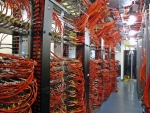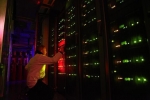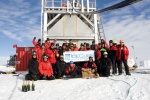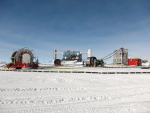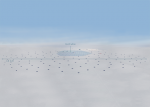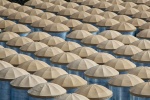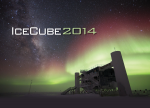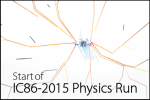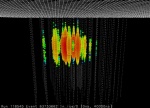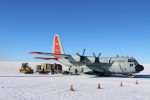There are
“detector”
22
Friday, May 27, 2016 - 12:00pm
“On behalf of the operations group, I’m happy to report that as of run 127950 on 2016-05-20, 20:38:47 UTC, we have started the IC86-2016 physics run.” With these words, every IceCuber learned that we were entering a new year of data for IceCube.
Article
Wednesday, March 30, 2016 - 8:00am
The National Science Foundation today, March 30, announced that it has renewed a cooperative agreement with the University of Wisconsin–Madison to operate IceCube, a massive neutrino telescope buried deep in the ice beneath the South Pole. The five-year, $35 million cooperative agreement calls for the continued operation and management of the observatory located at NSF’s Amundsen-Scott South Pole Station.
Article
Friday, December 18, 2015 - 1:00pm
Decades ago, the aspiration to build a kilometer-scale neutrino detector at the South Pole seemed farfetched; today, we celebrate the 5-year anniversary of this incredible achievement.
Article
Friday, December 12, 2014 - 2:00pm
Building a cubic-kilometer telescope at the South Pole seemed a chimera even for some of those involved in the project. The goal was simple in words but seemingly impossible in practice: 86 boreholes, each 60 cm in diameter and 2,500 m deep, had to be drilled and instrumented in seven austral summer seasons.
Article
Wednesday, December 17, 2014 - 8:15am
Prof. Olga Botner, IceCube spokesperson and a physics professor at the University of Uppsala, and Prof. Francis Halzen, IceCube principal investigator and a professor at the University of Wisconsin–Madison, tell us about the plans for an upgrade to the IceCube Neutrino Observatory.
Article
Monday, October 27, 2014 - 2:30pm
Puebla is again seeing dozens of physicists wandering in their streets these days, as researchers from the High-Altitude Water Cherenkov (HAWC) Observatory get together for their biannual collaboration meeting.
Article
Thursday, January 15, 2015 - 3:00pm
Yet another year has come to an end for IceCube with plenty of new science results, an always growing international collaboration, and plans for an update to the IceCube Neutrino Observatory.
Article
Wednesday, May 20, 2015 - 10:00am
Not everyone begins a new year on January 1, right? That includes IceCubers, who decided a while ago that mid-May would be a good time to start a new year of data for the South Pole neutrino observatory.
Article
Wednesday, February 6, 2013 - 12:00pm
From its vantage point at the geographic South Pole in Antarctica, the IceCube Neutrino Observatory is uniquely positioned to see neutrinos—mysterious, nearly massless, difficult-to-detect particles that are plentiful but little understood.
Article
Friday, December 6, 2013 - 2:00pm
Austral summers are not as exciting as they once were for IceCube. There are no more strings to be deployed, and the detector is performing impressively. But still, getting as much data as possible from this huge telescope buried in the Antarctic ice depends on how much can be done at the South Pole during a few months with daylight and reasonable temperatures.
Article

